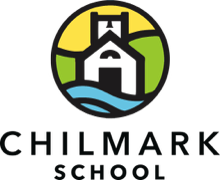HISTORY
Education in Chilmark, 1663- Present
During the earliest settling of Chilmark, the school and church probably operated together, meeting in homes in the Quenames area. State records mention a school in that part of town in 1663. By 1841 the town had three school districts and enrolled 146 children, with four teachers.
The Northeast District covered the north shore and some of the Elizabeth Islands, which were part of Chilmark at the time. The Southeast District covered the southeast area and the other Elizabeth Islands, while the Western District covered the western side of Nomans Land. By 1889 the Western District was beginning to be called Menemsha School. In 1897 Chilmark joined the Union School Committee with Edgartown, Oak Bluffs, and Tisbury, and a superintendent was hired.
By 1920 the Northeast and Southeast Districts and the school at Nomans Land were closed. Only Menemsha School survived. Clustered with the town’s post office, library, town hall, community center, and fire station, it was an integral part of Chilmark’s life and history. Many Chilmark families can name successive generations that have attended the small community school. In 1945 a heated discussion ensued regarding closing the school. But citizenry wished to keep its education local, and the school remained open. The issue arose again in the 1970’s and in 1983, but each time Chilmark’s citizens maintained that educating locally would best secure the elements of a sound education for their young. Presently, Chilmark school is a member of the Up Island Regional School District, which also includes Aquinnah and West Tisbury.
The new Chilmark School proudly joins the long succession of educational facilities in town and ensures local education for generations to come.
MISSION STATEMENT
The Chilmark School provides an innovative, hands-on thematic learning that fosters a love of learning and community.
At the Chilmark School we collaborate to:
*Provide safe, healthy settings to nurture the unique potential of each student.
*Offer enriching learning opportunities that develop the whole child.
*Support students in their development of life skills to become contributing members of our community.
*Cultivate a culture of respect, responsibility and belonging.
*Instill a strong sense of place by embracing our island history, communities and families.
PHILOSOPHY STATEMENT
The philosophy of the Chilmark School is reflected in the day-to day pursuit of learning in a creative, caring environment in which each member of the school community has opportunities to develop their fullest growth potential, both academically and socially. It is our ambition that children will love to learn and in the process will gain the kind of self-esteem and independence that will enable them to act throughout their lives as responsible, concerned, caring citizens.
MULTI-AGE CLASSROOMS
At the Chilmark School Kindergarten & 1st grade are combined, 2nd & 3rd grades are combined and 4th & 5th grades are combined. The multi-age classroom offers many benefits to the student as well as the school community. The multi-age approach has been an integral piece of the Chilmark School's philosophy since its inception. This environment embraces the differences in learning styles and embodies cooperation and support between learners. Instruction is customized to a student's learning speed, rather than the student being confined to a grade level based set of expectations.
Students experience new roles in a multi-age classroom - transitioning from novice to mentor within each two-year cycle. This growth promotes confidence, self-esteem and helps to nurture strong classroom communities. We find that students forge relationships outside of their age groups and more easily respect the perspectives and individuality of all students.
BENEFITS OF MULTI-AGE LEARNING
•Learners are at the center of instruction
•Cooperation and leadership skills are encouraged
•Pace of learning is not confined to "grade levels”. Each learner progresses at their own pace and level
•Older students take on mentoring roles
•Younger students witness the process of older students
•Students learn to initiate their own learning
•Builds confidence, individuality and independence
•Reinforces learning - older students practice teaching younger students
•Students are exposed to a greater variety of skills and learning styles
•Interaction between all age groups establishes a positive & nurturing environment
•Strengthens bonds between students and teachers
ABOUT
